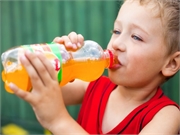Decline seen across income levels, including SNAP participants
MONDAY, Dec. 2, 2019 (HealthDay News) — Efforts to decrease sugar-sweetened beverage consumption during the past decade have been successful, according to a study published online Nov. 20 in the American Journal of Preventive Medicine.
J. Wyatt Koma, an independent researcher from Washington, D.C., and colleagues used data from the U.S. National Health and Nutrition Examination surveys (2003 to 2014) to evaluate dietary data from 15,645 participants (aged 2 to 19 years). Trends in sugar-sweetened beverage consumption were compared by Supplemental Nutrition Assistance Program (SNAP) participation status.
The researchers observed significant declines across all SNAP participation categories for sugar-sweetened beverage consumption (SNAP participants: 84.2 to 75.6 percent; income-eligible nonparticipants: 85.8 to 67.5 percent; lower income-ineligible nonparticipants: 84.3 to 70.6 percent; higher income-ineligible nonparticipants: 82.2 to 67.7 percent). There were also declines noted for per capita daily sugar-sweetened beverage calories (SNAP participants: 267 to 182 kcal; income-eligible nonparticipants: 269 to 168 kcal; lower income-ineligible nonparticipants: 249 to 178 kcal; higher income-ineligible nonparticipants: 244 to 161 kcal). There was an increase seen in per capita sports/energy drink consumption among SNAP participants (2 to 15 kcal).
“Current policy debates are considering whether the diet quality of SNAP participants can be improved by restricting which items can be purchased with SNAP benefits,” senior author Sara N. Bleich, Ph.D., from the Harvard T.H. Chan School of Public Health in Boston, said in a statement. “Our analysis is important for these discussions.”
Copyright © 2019 HealthDay. All rights reserved.








